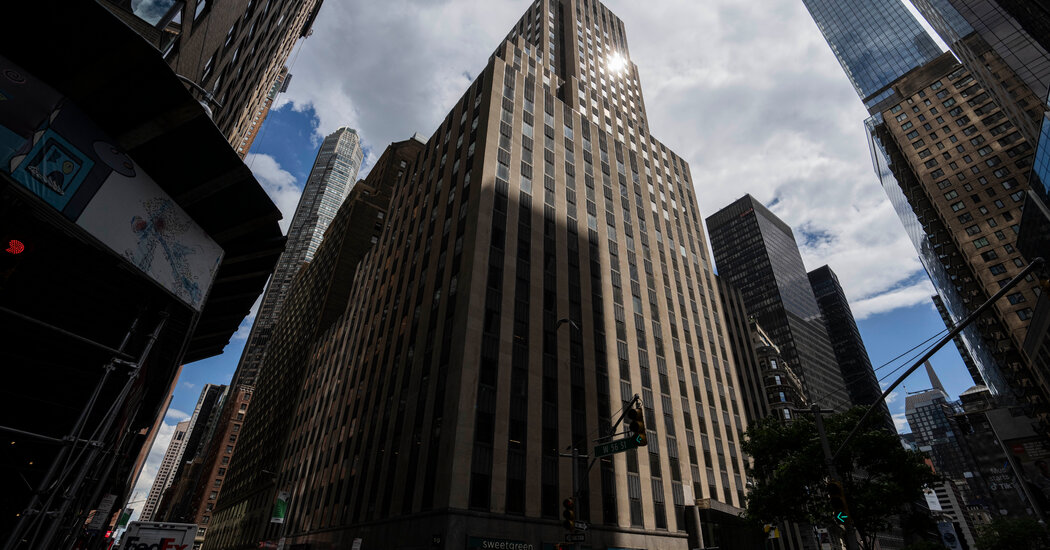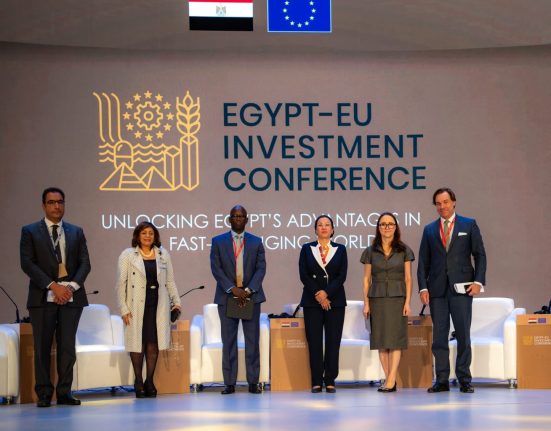A perfect storm of plunging property values for aging buildings, weak tenant demand coming out of the pandemic and high interest rates for new loans and refinancing has left the $2.4 trillion office building sector wobbling.
For some real estate investors, that may be a good thing.
Several big office buildings nationwide — including in Manhattan — have recently sold at steep discounts of as much as 70 percent to opportunistic buyers, who are gambling that they will score big profits when prices eventually rebound.
In April, a little-known firm, Yellowstone Real Estate Investments, paid $185 million for 1740 Broadway, a storied office tower near Columbus Circle in Manhattan. The investment giant Blackstone had paid $600 million for the building a decade earlier. And this week, two real estate firms snapped up a Midtown Manhattan tower for less than $50 million, according to Bloomberg.
Even though these are relatively small buyers, their emergence is a sign of the pain building in the U.S. commercial real estate market. Distressed deal-making is one of the more visible illustrations of trouble brewing in the sector that could lead to large losses for hundreds of banks and investors in real-estate-backed loans.
Isaac Hera, the chief executive of Yellowstone, said his firm was making deals based on calculations that “our current investments will not be adversely affected if office prices continue to drop.” Mr. Hera added, “We never try to time the markets.”
Some industry analysts have cautioned that the bargain hunting is the tip of the iceberg, more a sign of quick deal-making than an indication that prices of office buildings have hit rock bottom — especially ones built decades ago.
“Office vacancies are going to heights we have never seen before,” said Chad Littell, national director of U.S. capital markets analytics at CoStar, a commercial real estate data and research firm. “As vacancies are rising, it’s difficult to get debt for buying or developing an office.”
CoStar is predicting that 2024 and 2025 will be the two worst years on record for office buildings in terms of the amount of floor space that tenants are giving back or vacating across the country.
The full extent of problems might not be evident until much later, given the complex dynamics and competing incentives of players in the market — from lenders and tenants to buyers and sellers.
The troubles in the office sector began with the pandemic, which ushered in a lasting shift to remote work. Employers have since had to adjust to not having their workers in the office five days a week, leading many to downsize their office space. That has hit building owners, who depend on regular rents to pay off their mortgages.
Rising interest rates have made things only more difficult, with many owners reluctant to renegotiate financing deals or unable to afford new mortgages — especially if landlords don’t have enough rent-paying tenants. Some building owners have threatened to default on mortgages and walk away from their properties.
At the same time, lenders and investors in bonds backed by commercial real estate loans are trying to stave off foreclosures of buildings and having to incur big losses through distressed sales. Instead, many have given property owners more time, hoping they can recruit new tenants and restart mortgage payments. That strategy is keeping a lid on the number of distressed buildings currently up for sale. But at some point, foreclosures and distressed sales become inevitable, and that is happening in New York, Chicago and Los Angeles.
So far this year, 16 office buildings with mortgages that were packaged into commercial real estate bonds were foreclosed on or extinguished — resulting in $500 million in losses for investors nationally, according to Trepp, a data and research firm. Last year, 26 mortgages packaged into bonds were foreclosed on or extinguished, resulting in $265 million in losses for investors.
The dollar value of those losses is small given that about $171 billion worth of office building mortgages has been packaged into bonds. But Trepp has placed more than a quarter of those loans on a watch list for potential problems — meaning more distressed sales could be in the offing.
Most bargain hunters are paying all cash for office buildings because lenders are more focused on shedding portfolios of troubled loans and less open to taking on new debt, industry experts said. Those buyers are often content to wait for interest rates to come down before locking themselves into the customary 10-year loan for financing an office building transaction.
Mr. Hera of Yellowstone said he preferred cash-buying when dealing with distressed sellers because deals closed quicker. He added that his firm, which relies on money from pension funds and wealthy investors, had “hundreds of millions of dollars” to buy other properties or loans.
Yellowstone bought 1740 Broadway, a largely vacant building, with plans to potentially convert some floors to apartments, Mr. Hera said. A Blackstone fund had paid $600 million in 2014 for the historic building, once occupied by the Mutual Life Insurance Company of New York and nicknamed the “MONY” building.
The Blackstone purchase was partly financed by a $308 million mortgage from Deutsche Bank, which was later rolled into a commercial real estate bond that was sold to investors. Blackstone said that it had written off its stake in the building three years ago, around the time big tenants began to leave during the pandemic, and that the effects on its investors were limited. Some investors in the bond backing 1740 Broadway also suffered losses because the $185 million that Yellowstone paid was well below the value of the mortgage.
TPG and its business partner, GFP Real Estate, also plan to convert the largely empty 27-story building that they acquired at 222 Broadway for $147.5 million into apartments, a person briefed on the matter said. GFP is part of an ownership group that also plans to convert the historic Flatiron building in Manhattan to apartments.
Many in the real estate business see converting office buildings into apartments as a way to deal with the need for more housing in cities and the decreased demand for office space. But conversions are costly, and not all buildings are easy to retrofit.
Both Yellowstone and TPG picked up the two buildings on Broadway at a price that was roughly a 70 percent discount to what those buildings were last sold for about a decade ago.
Robert Sarver, a real estate developer and former owner of the National Basketball Association’s Phoenix Suns, is using some of his personal fortune to invest in office buildings. Mr. Sarver’s family money backs a Phoenix-based investment firm, 3Edgewood, which last year acquired office properties in Dallas and Houston in all-cash deals.
Mr. Sarver sold the Suns and a professional women’s basketball team two years ago after an investigation by the N.B.A. into allegations of mistreating employees and having used racial slurs. He reportedly sold the two teams for $4 billion. Mr. Sarver declined to discuss the deal.
In October, Mr. Sarver’s firm paid about $580 million in cash for a relatively new office and retail complex in suburban Dallas. Seven years earlier, the complex sold for more than $733 million, according to CoStar data.
Timothy Sloan, a former chief executive of Wells Fargo and vice chairman of the investment firm Fortress, said it was too early for most institutional investors to start buying office buildings — even at distressed prices.
“You could see wealthy people buying empty office buildings,” Mr. Sloan said. “But they can afford to take the long view where an investment fund can’t.”
Another thing holding back distressed buying is that so many aging properties need big capital investments to provide the kind of amenities that tenants are looking for or to pay to convert those buildings to residential apartments.
Jeffrey Kaplan, a founder of Meadow Partners, a $6.2 billion real estate manager, said it was hard to get too excited about buying an older office building that did not have the amenities of a newly constructed one — even at a distressed price.
“Some of these buildings, I just don’t know what happens,” Mr. Kaplan said. “It’s not feasible to convert all these ‘meh’ office buildings into residential. It’s still too expensive in a lot of cases.”
Susan C. Beachy contributed research.







